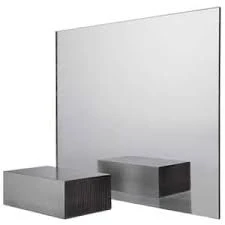

The Impact of Slumping Float Glass on the Glass Industry
Glass has been a fundamental material in architecture, art, and technology for centuries. Among various types of glass, float glass has emerged as one of the most popular choices for a wide range of applications, including windows, mirrors, and facades. Float glass is produced through the float process, where molten glass is floated on top of molten tin to create a smooth, even surface. However, one of the fascinating aspects of float glass is its ability to be reshaped and adapted to meet specific design requirements using a technique known as slumping.
Understanding Slumping Float Glass
Slumping is a glass-forming technique that involves softening glass through heating, allowing it to deform and take the shape of a mold. When applied to float glass, slumping provides the opportunity to create custom shapes and designs that were previously difficult or impossible to achieve with flat glass. This technique is particularly valuable in architectural design, where unique and innovative features can enhance aesthetic appeal.
The slumping process begins by heating the float glass in a kiln. As the temperature rises, the glass transitions from a solid to a more flexible state. Eventually, it becomes sufficiently pliable to slump under its own weight into a predetermined mold. This process can allow for an immense variety of designs, from gentle curves to intricate shapes that can serve functional or decorative purposes.
Applications of Slumping Float Glass
Slumping float glass has found numerous applications across various sectors. In architecture, designers often use slumped glass for skylights, facades, and partitions, where traditional flat glass would not suffice. The ability to create soft curves and organic shapes allows architects to push the boundaries of conventional design, creating buildings that not only serve their functional purpose but also act as works of art.
In interior design, slumped glass is used for countertops, tabletops, and decorative panels. The engaging interplay of light and shadow created by the unique glass forms gives spaces a dynamic quality, enhancing the ambiance of homes and commercial areas. Additionally, artists have embraced slumped float glass as a medium for creating sculptures and installations, finding endless creative possibilities in its versatility.

Benefits of Using Slumped Float Glass
The adoption of slumped float glass has several advantages. Firstly, it offers enhanced aesthetic appeal. The unique shapes achieved through slumping invite visual interest and can serve as focal points in any design scheme. The textural qualities created by the process also ensure that each piece is unique, adding a layer of individuality.
Secondly, slumped float glass can improve the performance of the glass itself. By manipulating the shape and curvature, designers can enhance the structural integrity of the glass, enabling it to withstand environmental pressures more efficiently, particularly in regions with harsh weather conditions. This might also contribute to improved thermal performance, as curvilinear forms can help to manage sunlight and heat gain more effectively.
Challenges and Considerations
Despite its many advantages, working with slumped float glass presents challenges as well. The slumping process requires precise temperature control and timing, as overheating can lead to defects, and underheating may result in insufficient shaping. Furthermore, the molding process can be time-consuming, and the initial costs associated with custom molds can be significant.
Moreover, architects and designers must also consider the logistics of installation and durability, ensuring that slumped glass pieces are fitted securely and are capable of withstanding everyday use without compromising structural integrity.
Conclusion
Slumping float glass is a remarkable technique that has broadened the horizons of glass design and manufacturing. By allowing architects and artists to experiment with form and function, slumped glass continues to play a pivotal role in creating innovative and visually captivating environments. As the demand for unique design solutions grows, the significance of slumping float glass within the industry is only expected to rise, proving that the world of glass is as flexible and dynamic as the material itself.